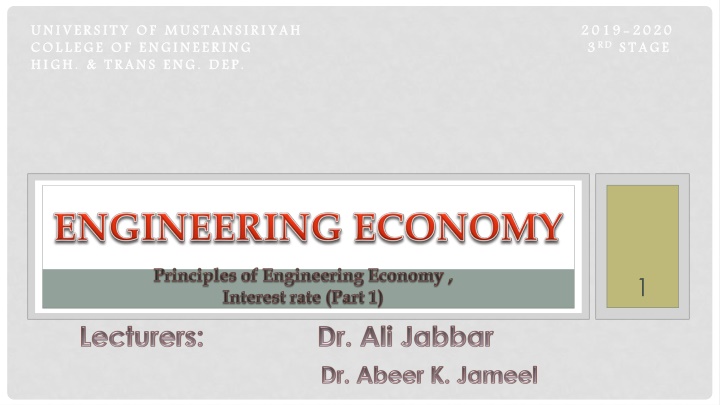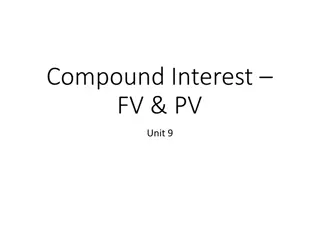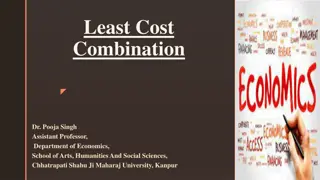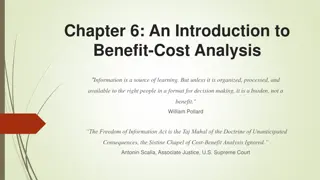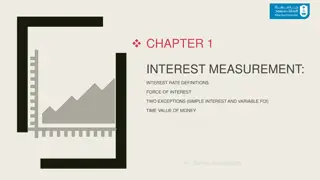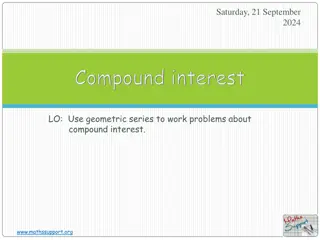Introduction to Engineering Economics: Interest Rates, Cost Analysis, and Decision-Making
Fundamentals of Engineering Economics including interest rates, cost-benefit analysis, and various methods for economic comparisons in engineering projects. Learn about the relationship between cost and production size, supply and demand, as well as the significance of different interest rate types like simple and compound interest.
Download Presentation

Please find below an Image/Link to download the presentation.
The content on the website is provided AS IS for your information and personal use only. It may not be sold, licensed, or shared on other websites without obtaining consent from the author.If you encounter any issues during the download, it is possible that the publisher has removed the file from their server.
You are allowed to download the files provided on this website for personal or commercial use, subject to the condition that they are used lawfully. All files are the property of their respective owners.
The content on the website is provided AS IS for your information and personal use only. It may not be sold, licensed, or shared on other websites without obtaining consent from the author.
E N D
Presentation Transcript
UNIVERSITY OF COLLEGE OF ENGINEERING HIGH. & TRANS ENG. DEP. UNIVERSITY OF MUSTANSIRIYAH COLLEGE OF ENGINEERING HIGH. & TRANS ENG. DEP. MUSTANSIRIYAH 2019 2019- -2020 3 3RD 2020 STAGE RD STAGE 1
Main points Introduction about Engineering Economics The interest rates; Relationship between cost and production size and between Supply and Demand Economical comparisons using - Net Present Value (NPV), - Future Worth, - Internal Rate of Return (IRR) methods) - External Rate of Return (ERR) and - Explicit Reinvestment Rate of Return (ERRR) methods) Economical comparisons using for highway and railway projects - Comparisons Using the Repeatability Assumption - Comparisons Using the Contaminated Assumption Linear Programming: Assignment and Transportation Matrices Cost-benefit analysis 2
Interest rate Types 1. Simple Interest 2. Compound interest 6
